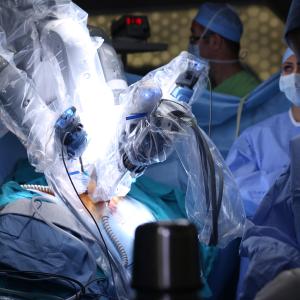Conversion from robotic partial to radical nephrectomy is low among patients with a renal mass, while that due to uncontrolled bleeding is even lower, according to a study.
Researchers stratified all patients who were scheduled to undergo robotic partial nephrectomy by completed procedure (robotic partial vs radical nephrectomy). They reviewed pre- and intraoperative records for preoperative assessment of difficulty and reason for conversion. Finally, comparisons were made for patient, tumour, pathologic, and practice variables between cohorts.
A total of 650 patients were assessed, of whom 27 (4.2 percent) converted from robotic partial to radical nephrectomy. Conversions to open surgery were not reported.
Based on preoperative documentation, 18 (67 percent) patients were planned for possible conversion including partial with possible radical (n=8), partial versus radical (n=6), or likely radical nephrectomy (n=4). Intraoperative documentation showed five (19 percent) conversions due to bleeding, while the remaining conversions were done because of tumour complexity or oncologic concerns.
Patients undergoing conversion tended to have larger (4.7 vs 2.8 cm; p<0.001) and higher-complexity tumours (64 percent vs 6 percent; p<0.001) with RENAL (Radius, Exophytic/endophytic, Nearness of tumor to collecting system, Anterior/posterior, Location relative to polar line) nephrometry score ≥10. In addition, patients who converted showed a higher rate of ≥pT3 (27 percent vs 8.4 percent; p=0.008).
“Targeted review of each conversion identified appropriate decision-making based on oncologic risk in most cases,” the researchers said.
“Partial nephrectomy is standard-of-care treatment for small renal masses,” they said.

